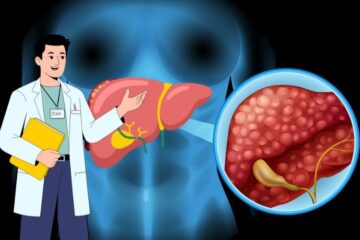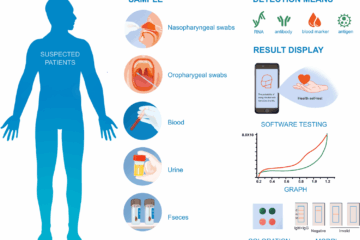
In 2009, Dr. Maya Adam, found herself unexpectedly pregnant with her third child. The then-36-year-old and her husband, Lawrence Seeff, were surprised, but thrilled.
Although her two previous deliveries were uncomplicated and her sons Kiran, now 11, and Misha, now 8, were healthy, she had cesarean sections for both.
This time, everything seemed to be going well. But at her 20-week ultrasound, the Menlo Park, California woman was told that she had placenta previa, a condition in which the placenta covers part or all of the opening of the cervix and can cause bleeding and complications.
Although placenta previa carries risks, her doctor told her to limit high-impact exercise and if she started to bleed, she should go to the emergency room immediately.
“[My doctor told me] I needed to basically slow down a bit and that potentially I might need to go on bed rest,” Adam recalled.
At 30 weeks, Adam was put on bed rest and, according to some of her ultrasounds, looked as though the placenta had grown into the uterus, a condition known asplacenta accreta.
As the news started to settle in, Adam and Seeff had a serious discussion about their future. They decided to create a video of all their family’s special birthdays, celebrations and moments together for their children in case she didn’t make it through.
“It started to dawn on us that this might actually be a little bit of a risky situation not only for me and the fetus but obviously for our other children, should they lose their mother in this delivery,” she said.
What is placenta accreta?
Placenta accreta is a condition in which part of or the entire placenta attaches to the uterine wall. Between 1982 and 2002, approximately one in 533 pregnancies was affected by placenta accreta, according to a study in the American Journal of Obstetrics and Gynecology.
It’s also possible for the placenta to invade the muscles of the uterus, (placenta increta) or break through the uterine wall and invade the bladder or the bowel (placenta percreta).
When placenta percreta occurs, part of the bladder or the bowel may have to be removed, which can lead to long-term complications, said Dr. Amelia Sutton, an assistant professor in the University of Alabama’s division of maternal-fetal medicine.
All types of placenta accreta are dangerous and the most significant risk is life-threatening hemorrhage. In fact, up to 90 percent of women with the condition will need a blood transfusion.
The recommendation for women with placenta accreta is to deliver early.
“We incur the cost of prematurity to counteract the benefit of that safer delivery,” said Dr. Deirdre Lyell, medical director of the program for placental disorders within the division of maternal-fetal medicine at Lucile Packard Children’s Hospital in Palo Alto, California.
Most women will also require a hysterectomy because the placenta cannot be safely removed. Yet the surgery is challenging. Since 20 percent of the blood supply goes to the uterus during pregnancy and the blood vessels are engorged, the bleeding can be difficult to stop.
What causes placenta accreta?
A study from 1996 found that up to 7 percent of women die from placenta accreta but it’s possible fewer women die from it today because of improved technology, Lyell said.
Placenta accreta can occur independently, but it does have a high association with placenta previa. In fact, a woman who has placenta previa has up to a 5 percent risk of also having placenta accreta.
Although the cause of placenta accreta is unknown, experts agree that placenta accreta is on the rise because of the high cesarean section rate, which is at nearly 33 percent of births in the U.S.
The problem is that once a woman has her first C-section, she has a higher risk for having subsequent cesareans. The more she undergoes, the more damage to the uterine wall and the higher the risk for the condition.
“Women should know that this is a potential risk when they’re deciding their family size and if they’ve had multiple cesarean deliveries,” Sutton said. “I think there’s this perception that cesareans are very benign procedures and they’re so routine that having multiple cesareans is not particularly risky. They’re still surgeries and they still carry not only short-term risks but the long-term risks that the public is probably not aware of.”
Women without previous uterine surgeries have up to a 5 percent risk of having the condition.
Other risk factors include previous births, uterine fibroids, endometrial ablationsurgery, advanced maternal age, in vitro fertilization (IVF) and smoking.
“For the next 3 hours, they literally battled for my life.”
At 37 weeks, Adam was admitted into the hospital to deliver her baby. Doctors placed two large IVs in her veins to prepare for a large blood transfusion and she was wheeled into the hospital’s main operating room, instead of the maternity ward.
“That was another sign for me that they were really preparing for the worst,” she said.
After doctors delivered her baby via C-section, Adam held their son Milan for all of 30 seconds.
“They took both my husband and the baby out of the room and [the doctor] told me, ‘We’re going to move forward with the hysterectomy.’ Apparently, for the next three hours, they literally battled for my life,” she said.
The medical team transfused 22 units of blood to keep Adam alive as they struggled to stop the bleeding, maintain her blood pressure and stabilize her.
After surgery and back in the ICU, Adam was hooked up to a breathing tube. Although she couldn’t talk, she could write and asked her husband how Milan was.
“He was very emotional and happy that he wasn’t left alone to raise three boys by himself,” she said.
Adam spent one week in the maternity ward and returned home to her family to rest and recover. She left with a large scar, a drain for the fluid and a lot of pain.
Although the couple had prepared for the worst, Adam said she never believed she wouldn’t pull through.
“There’s something inherent in mothers that makes them believe that everything is going to be OK,” she said.
Today, Milan, now 6, is healthy, independent and self-sufficient.
“He’s such a determined survivor kind of child,” Adam said.
For Adam, coming so close to death has made her even more grateful for the life she has been given.
“This whole experience made me determined to make a difference in the world because I feel like these are bonus years that I have. I could so easily have not been here these last six years so there must be a reason I’m here.”
[Source:-Fox News]




